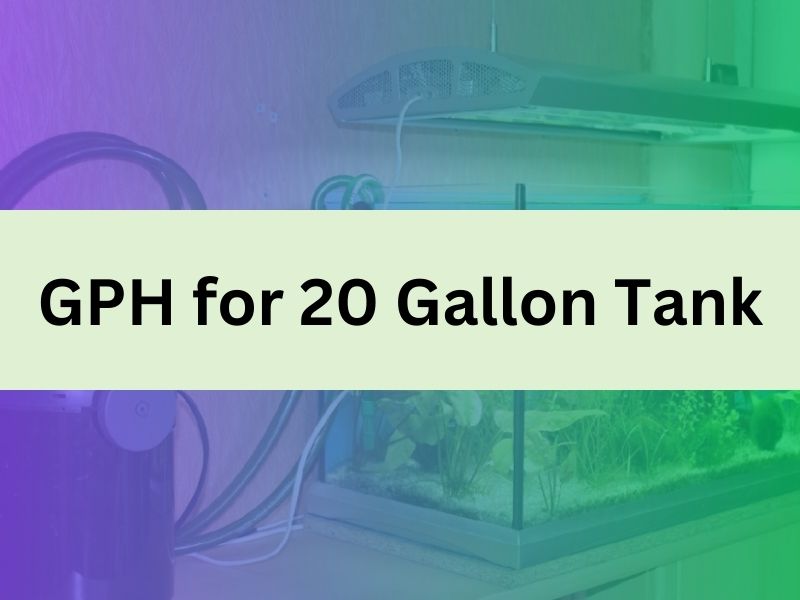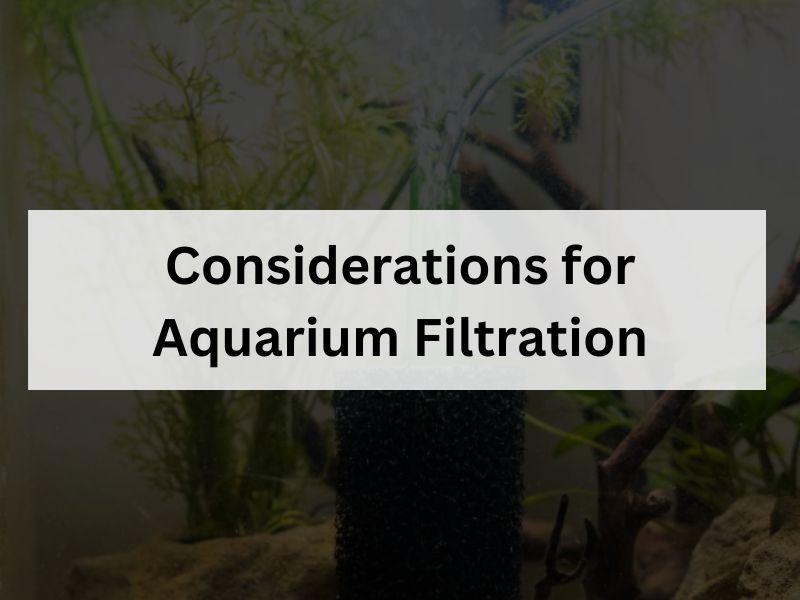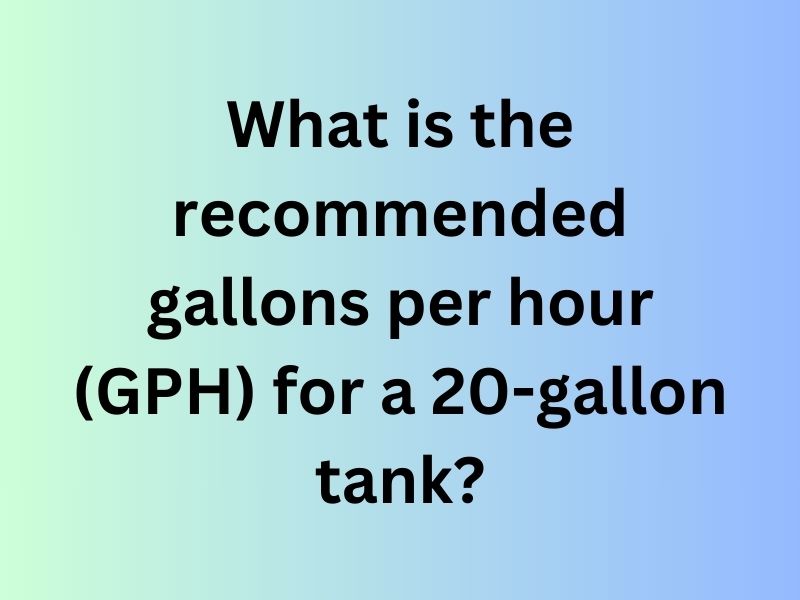If you’re a beginner or even a seasoned aquarium hobbyist, one of the most important factors to consider when setting up a new fish tank is the filtration system. Proper water filtration is crucial for maintaining a healthy aquatic environment for your fish and other inhabitants. When it comes to determining the appropriate gallons per hour (GPH) for a 20-gallon tank, there are several factors to consider. In this article, we will explore the ideal GPH rate, the different types of filters available, and other important considerations for maintaining a clean and balanced aquarium.
The Role of Filtration in Your Aquarium
Before we delve into the specifics of GPH rates for a 20-gallon tank, let’s first understand the importance of filtration in your aquarium. An efficient filtration system is vital for maintaining water quality by removing debris, harmful chemicals, and waste products from the tank. Filtration helps to replicate the natural habitat of your fish, ensuring a healthy and stress-free living environment.
A good filtration system performs three essential functions:
1. Mechanical Filtration: This stage removes physical debris such as uneaten food, plant matter, and fish waste from the water. It typically involves a filter media that physically traps or screens out particles.
2. Chemical Filtration: This stage utilizes activated carbon or other chemical media to absorb dissolved impurities, odors, and toxic substances, thus enhancing water quality.
3. Biological Filtration: This crucial stage involves beneficial bacteria that break down harmful substances, such as ammonia and nitrite, into less toxic compounds. These bacteria colonize the filter media and substrate in your tank.
Calculating GPH for a 20-Gallon Tank

When it comes to determining the ideal GPH rate for your 20-gallon tank, a general guideline is to aim for a turnover rate of 4 to 6 times the tank volume per hour. The turnover rate refers to the number of times the entire volume of water in the tank passes through the filter within an hour. For a 20-gallon tank, this translates to a recommended GPH range of 80 to 120.
To calculate the ideal GPH rate for your tank, use the following formula:
GPH = Tank Volume (in gallons) × Desired Turnover Rate
For example, let’s say you aim for a turnover rate of 5 times per hour in your 20-gallon tank:
GPH = 20 gallons × 5 = 100 GPH
In this scenario, a filter with a flow rate of 100 gallons per hour would be suitable for your 20-gallon tank.
Types of Filters for a 20-Gallon Tank
Now that you have an idea of the recommended GPH rate for your 20-gallon tank, let’s explore the different types of filters available:
1. Hang-On-Back (HOB) Filters: HOB filters are one of the most popular choices for small to medium-sized tanks. They are easy to install and provide mechanical, chemical, and biological filtration. HOB filters hang on the back of your tank and draw water through a siphon tube, passing it through various filter media before returning it to the tank.
2. Canister Filters: Canister filters are external filters that sit outside the tank and provide superior filtration. They offer a larger filtration capacity and are great for tanks with larger bio-loads or if you prefer a quieter filtration system. Canister filters provide mechanical, chemical, and biological filtration and are often used in larger tanks.
3. Sponge Filters: Sponge filters are simple and cost-effective options for smaller tanks or breeding setups. They consist of a sponge attached to an air-driven tube or pump. While they primarily provide mechanical and biological filtration, sponge filters can be combined with other filtration methods for enhanced performance.
Other Considerations for Aquarium Filtration

Aside from the GPH rate and filter type, there are a few more factors to consider when choosing and maintaining your aquarium filtration system:
1. Tank Inhabitants: Different fish species and aquatic animals have varying filtration needs. Research the specific requirements of your fish to ensure the filtration system is appropriate for their needs.
2. Tank Size and Placement: Consider the size and placement of your tank when selecting a filter. Ensure it fits properly and can handle the capacity of your tank.
3. Maintenance and Cleaning: Regular maintenance is essential to keep your filtration system running smoothly. Follow manufacturer instructions for cleaning and replacing filter media to ensure optimal performance.
4. Additional Equipment: Depending on the specific needs of your tank, you may require additional equipment such as a protein skimmer, UV sterilizer, or powerhead. Research and consult with experienced aquarists to determine if any additional equipment is necessary for your setup.
- What happens if my GPH rate is too low?
A low GPH rate can result in poor water quality, accumulation of toxins, and inadequate oxygen levels in the tank. It may lead to stressed and unhealthy fish. - Can I have a GPH rate higher than the recommended range?
While a higher GPH rate can provide increased filtration, it may create excessive water movement in the tank, which can stress certain fish species. Be cautious and monitor your fish for any signs of distress. - Can I combine different types of filters?
Yes, it’s possible to combine different types of filters to achieve better filtration. For example, you can use a sponge filter in combination with a HOB filter for enhanced mechanical and biological filtration. - How often should I clean my filter?
Filter cleaning frequency depends on various factors such as the type and size of your filter, the bio-load in your tank, and the manufacturer’s recommendations. Generally, it’s recommended to clean or replace filter media regularly to prevent clogging and maintain optimal performance. - What are some signs that indicate my filter needs cleaning or maintenance?
Reduced water flow, foul odor, and cloudy water are common signs that your filter may need cleaning or maintenance. Monitor your tank regularly and address any issues promptly to prevent water quality problems.
What is the recommended gallons per hour (GPH) for a 20-gallon tank?
The recommended gallons per hour (GPH) for a 20-gallon tank generally depends on the type of filtration system you are using and the specific needs of your aquarium. However, a good rule of thumb is to aim for a turnover rate of 5-10 times the tank volume per hour.
Can I use a filter with a higher GPH for my 20-gallon tank?
Using a filter with a higher GPH than the recommended range can be beneficial in some cases. It helps to ensure efficient filtration and maintain good water quality by enhancing water circulation. However, it’s important to make sure the filter is suitable for your tank’s inhabitants and doesn’t create strong currents that could stress the fish.
Is it okay to use a filter with a lower GPH for my 20-gallon tank?
Using a filter with a lower GPH than the recommended range may not provide adequate filtration for your 20-gallon tank. Insufficient water flow can result in poor water quality and accumulation of harmful substances. It’s generally recommended to choose a filter with a GPH within the suggested range for optimal filtration.
How do I calculate the ideal GPH for my 20-gallon tank?
The ideal GPH (gallons per hour) for your 20-gallon tank depends on the specific requirements of your aquarium. To calculate the GPH, you can multiply the tank volume (20 gallons) by the desired turnover rate (5-10 times). For example, a turnover rate of 8 times would require a filter with a GPH of 160 (20 gallons x 8 times).
Can I combine multiple filters to achieve the desired GPH for my 20-gallon tank?
Yes, combining multiple filters is a common practice to achieve the desired GPH for a 20-gallon tank. It can provide enhanced filtration and water circulation. However, it’s important to ensure that the combined GPH of the filters falls within the recommended range for your tank and is suitable for the inhabitants.
Are there any other factors to consider when choosing the GPH for my 20-gallon tank?
Yes, besides the recommended turnover rate, it’s essential to consider the type of filter media, the stocking level of your tank, and the sensitivity of the aquatic species you intend to keep. Some species, such as certain delicate fish or plants, may require lower water flow rates to thrive. Always research the specific needs of your tank before determining the ideal GPH.
Conclusion
Maintaining proper filtration in a 20-gallon tank is crucial for the health and well-being of your aquatic pets. By understanding the recommended GPH rate and the different types of filters available, you can make an informed decision that suits your specific needs. Remember to consider the size and type of your tank, the inhabitants, and the maintenance requirements when selecting and maintaining your filtration system. With the right filtration system in place, you’ll enjoy a clean and balanced aquarium that brings joy and tranquility to your home.
